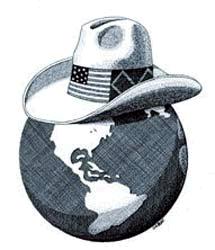Hegemonic Stability Theory
 The theory of hegemonic stability relies on multiple perspectives such as liberal, historical and structural (Sobel, 2012). According to hegemonic theory high level of openness and stability of international system can be maintained when there is a single hegemonic country that meets the following requirements:
The theory of hegemonic stability relies on multiple perspectives such as liberal, historical and structural (Sobel, 2012). According to hegemonic theory high level of openness and stability of international system can be maintained when there is a single hegemonic country that meets the following requirements:
a) Hegemonic country must possess sufficient amount of resources in order to allow the country to engage in leadership;
b) Hegemonic country must be enthusiastic in terms of pursuing policies that pursuing policies needed to create and maintain free economy.
Hegemonic models are divided into three different categories by Joseph (2013) in the following manner:
- Benevolent hegemon. For this type of hegemon common interests prevail over self-interest of a hegemonic state. Moreover, benevolent hegemonic model is closely associated with absolute advantages of countries. According to Joseph (2013) individuals who believe in liberal values consider hegemon to be benevolent in most cases
- Mixed motives and strategies hegemon. Involving both, absolute and relative advantages, mixed hegemon pursues common and personal benefits in a simultaneous manner. Joseph (2013) specifies mixed hegemon as the most common model of hegemonic states.
- Exploitative hegemon is perceived to be based purely on self-interest of hegemonic states and may involve the use of coercion to enforce compliance with the wills of hegemonic states. There is a consensus amongst authors about highly negative effects of the model of exploitative hegemon to other countries.
References
Joseph, J. (2013) Hegemony: A Realist Analysis, Routledge
Sobel, A.C. (2012) Birth of Hegemony: Crisis, Financial Revolution, and Emerging Global Networks, University of Chicago Press
